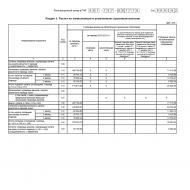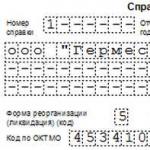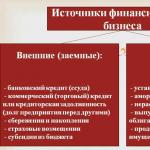
Construction estimates: types, methods of compilation. Estimates: their types and types
Types and features of estimates
Budgeting Methods
Calculation of construction estimates for landscaping
Estimated costs (costs) is designed to group the upcoming expenses of the enterprise, aimed at the implementation of any activity. In addition, there are estimates aimed at financing the activities of any enterprise or organization. The purpose may be the execution of design or construction work, and the like. In our article, we will talk about the types of estimates, the methodology for their preparation, we will give an example of calculating a construction estimate for landscaping.
Many facts of economic activity require an estimate. Estimates are of different types, it depends on the type of activity of the organization, its organizational and legal form. So manufacturing companies make estimates of production costs, non-profit organizations - estimates of income and expenses, construction companies - specialized construction documentation, which includes estimates for construction and installation work (construction and installation works) and for the development of project documentation.
Types of estimates
Production Cost Estimate
Includes planned costs for the manufacture of products, compiled for each type of product.
It indicates direct, or variable, costs that depend on the volume of output:
- material costs;
- wages of production workers and insurance premiums;
- depreciation deductions;
- other costs directly related to the release of products.
Here is formed partial cost of the product.
These cost estimates are used to calculate the standard cost of the finished product at which it will be taken into account in the warehouse, and the selling price at which this product will be sold to customers.
The cost estimate for production allows you to control the use of resources - to prevent overspending of material costs, timely identify deviations of actual indicators from planned ones, analyze and eliminate the causes of deviations. Without a production estimate, it is impossible to control the actual costs.
Estimates of income and expenses
In the estimates of income and expenses of HOA (partnerships of homeowners), TSN (partnerships of real estate owners), garage cooperatives, horticultural non-profit partnerships, in income indicate the amount of membership and (or) targeted contributions that go to the maintenance of a non-profit organization, and in expenses - all her expenses.
The expenses of such organizations include, among other things, the salary of an accountant and chairman, security costs, utility bills, garbage disposal, fire safety, etc. Estimates are approved by the general meeting of owners.
At the end of the year, the audit commission checks the validity of the expenses incurred, their documentary evidence, and the correspondence of the actual expenses to the expenses indicated in the estimate.
Construction estimates
Compiled for construction and installation work on the repair, overhaul of buildings and equipment, for the reconstruction and construction of new facilities (buildings, residential buildings, cottage settlements), landscaping of courtyard areas, laying roads, etc., as well as for design and survey construction work.
3 components of the estimate for construction and installation work:
1) direct costs;
2) overhead costs;
3) estimated profit.
The estimates for investment projects include the costs of design and survey and construction and installation work, the profit that the contractor should receive from the work.
As a rule, the price in investment contracts and construction contracts is contractual (that is, free, not tied to anything).
The cost of construction is determined at the stage of preparation of design estimates, taking into account economic, geographical and natural factors, local conditions. Subjects of investment activity (investors, customers-developers, contractors) are independent and equal, therefore the price for capital construction objects is set by mutual agreement of the parties.
The cost of construction can be determined at different stages, for example:
- design work (drawing up a master plan, sketches, etc.);
- construction and installation works (direct execution of construction works);
- commissioning of the necessary equipment at the facility under construction.
Prices in construction estimates are determined on the basis of a variant and flexible approach without rigid regulations and excessive centralization. Contract bidding allows you to choose the optimal cost, timing and quality of project implementation.
The cost of construction products and the volume of production depend on demand: the more housing is in demand, the more expensive 1 m 2 of living space and the more residential buildings are being built.
Any participant in the investment process can make an estimate:
- designer working under a contract with a customer. In this case, estimates are usually made by the resource method or at the basic level using a fixed price;
- customer - determines the preliminary cost of the investment project or draws up an investor estimate for a package of tender documentation;
- general contractor - determines the cost through contract bidding.
Depending on which of the subjects of investment activity made the estimate, the following types of them are distinguished (Table 1).
Table 1
Types of construction estimates
|
Type of construction estimate |
Who makes up |
At what stage is |
How is the amount of investment determined? |
Calculation accuracy |
|
Conceptual estimate |
Designer |
When developing investment proposals together with a feasibility study of the project |
Based on the information collected regarding the cost of a unit of consumer properties or the capacity of an object |
|
|
Investor estimate |
Investor |
At the pre-project stage, the starting price of the investment project is determined |
The starting price is calculated on the basis of the master plan or sketch of the construction object. The specification and volume of building materials and equipment are calculated according to aggregated indicators |
|
|
Contractor's estimate, (construction and installation works estimate) |
Contractor |
At the stage of concluding a contract on the basis of project documentation |
The estimated cost includes the cost of materials and construction and installation work, inflation losses, contractor's profit, and other points related to construction |
|
|
Estimate of the customer |
It is developed on the basis of a finished project or master plan, working drawings, taking into account elemental estimated norms, unit prices, average values of the cost of resources used in construction |
The estimated cost includes the cost of all stages of construction |
||
|
Executive estimate |
Customer or contractor |
After the completion of construction. The question of its necessity is decided in the process of concluding a contract. |
They take into account all actually incurred expenses, including additional ones that appeared during the implementation of the project for both the contractor and the customer |
The methodology for determining the estimated cost of an investment project, the regulatory framework used and the procedure for mutual settlements are negotiated by the customer and the contractor and are fixed in the signed contract.
Local estimates
The summary estimate calculation of an object under construction is compiled on the basis of local estimate calculations (estimates), which, in turn, are compiled on the basis of the physical scope of work, structural drawings of elements of buildings and structures, accepted methods of work, and, as a rule, for each building and structure according to types of work.
Contract agreements may provide for enlarged stages of work performance - technologically completed complexes of construction and installation works. They can be separately local estimates. For example, in estimates for buildings, underground and ground parts are allocated. This allows the customer to pay the contractor for the completed stage of work. For relatively simple objects, the estimated cost may not be grouped by sections.
The result obtained as a result of the estimate calculation in the local estimate is direct costs. Further, the size of overhead costs and profits are determined. Overhead costs are charged on the total of direct costs as a percentage. After that, the total cost is calculated. Profit is accrued on it (also in percentage terms).
Determining the cost of construction
The cost of construction can be determined:
- in the project - according to the consolidated estimated standards (price lists, consolidated estimated standards - USN, consolidated prices - SD), consolidated indicators of the cost of construction (UPS) and cost indicators of analogous objects;
- according to estimates for standard, reusable and individual projects tied to local construction conditions, and estimates compiled according to working drawings using price lists intended for this purpose (USN, UR).
Local estimates for the purchase of technological and engineering equipment are compiled on the basis of specifications for the equipment of the manufacturer, drawings of the technological part of the project documentation, factory price lists and stock lists of wholesale prices for equipment.
Note!
The cost of equipment, determined on the basis of wholesale prices for industrial products, includes the cost of delivering equipment to the construction warehouse, the cost of packaging, packaging, supply and sales margins, the cost of completing equipment and procurement and storage costs.
Due to high inflation and instability, it is impossible to develop unit prices for certain types of work, the cost of machine hours, operated machines and mechanisms, and determine the level of wages. In this regard, coefficients are applied to estimated prices approved by the State Construction Committee of the Russian Federation in 2001.
The coefficients show the change in value relative to the specified price level, taken as the base.
Correction coefficients (indices) are developed by regional pricing centers in construction (RCCS), which once a quarter, and in Moscow - monthly, publish a Collection of coefficients for recalculating the estimated cost of construction and installation works.
Our dictionary
current value level- the level of value determined on the basis of prices in force at the time of determining the value.
Base cost level- the level of cost, determined on the basis of estimated prices. Designed to compare the results of investment activities in different periods of time, economic analysis and determine the cost at current prices.
The method of making estimates using previously approved unit prices and bringing them to the price scale of the current period using indices is called basic-index.
Another common budgeting method is − resource: for each type of work, according to the collections of GESN-2001, in natural meters, the necessary material and technical resources, the time spent on the operation of machines and mechanisms, and the labor costs of workers are determined. Prices and tariffs for the specified resources are accepted current, that is, at the time of the estimate, or with a forecast for their possible change.
The resource method allows you to fairly accurately determine the estimated cost of construction at any time. Necessary resources are established on the basis of project documentation.
At the same time, a local resource sheet is first compiled, and then, on its basis, a local estimate calculation.
Object estimates
Object cost estimates (cost estimates) are compiled for the construction of each individual building and structure on the basis of local estimates (estimates) for certain types of work and costs for buildings, structures and general site works and determine the total amount of all costs associated with the construction of the facility.
Estimated calculations (estimates) that are included in the object estimates agreed with contracting construction organizations are the basis for determining the estimated cost of the object under construction.
Object estimates take into account the cost of all types of construction and installation work, the cost of equipment, fixtures and inventory.
To determine the total estimated cost of the object, the object estimate at current prices additionally includes funds to cover limited costs:
- for the increase in the cost of work performed in the winter, and other similar costs included in the estimated cost of construction and installation works;
- other works and costs, which are determined as a percentage of the cost of each type of work, costs or the result of construction and installation works for all local estimates;
- a reserve of funds for unforeseen work and costs provided for in the summary estimate of the cost of construction to reimburse the contractor's costs, the amount of which is determined by separate agreement between the customer and the contractor.
If the cost of an object can be determined from a local estimate, an object estimate is not compiled. In this case, the role of the object estimate is performed by the local estimate, which indicates the funds to cover the limited costs in the same manner as for object estimates.
For your information
In the object estimate calculation, as a result, indicators of a unit cost per 1 m 3 of volume, 1 m 2 of the area of buildings and structures, 1 m of the length of networks, etc. are given.
Object estimates drawn up according to working drawings, agreed with the contracting construction organization and approved by the customer, are the basis for payments for the work performed. The quality of object estimates determines the correctness of determining the price of construction products, and, consequently, the results of the production and economic activities of contractors.
Consolidated estimate calculation
The summary estimate calculation of the cost of construction of enterprises, buildings and structures or their stages determines the estimated limit of funds necessary for the complete completion of the construction of all objects provided for by the project. Compiled on the basis of object estimates (object estimates) and estimates for additional costs not included in the object and local estimates.
On the basis of the approved consolidated estimate calculation of the cost of construction, the limit of capital investments in financing construction is determined.
Each line of the summary estimate calculation corresponds to the data of the object estimate calculation (object estimate) for individual objects, works and costs and has a link to the number of the specified documents.
In the summary estimate, a separate line provides for a reserve of funds for unforeseen work and costs:
- no more than 2% - for social facilities;
- no more than 3% - for industrial facilities.
When compiling a consolidated estimate, current prices are used.
An approximate list of chapters of the consolidated estimate calculation of the cost of industrial and civil construction:
- Preparation of the construction site.
- The main objects of construction.
- Utility and service facilities.
- Energy facilities.
- Objects of transport economy and communication.
- External networks and facilities for water supply, sewerage, heat supply and gas supply.
- Landscaping and landscaping.
- Temporary buildings and structures.
- Other work and expenses.
- Maintenance of the directorate (technical supervision) of the enterprise under construction.
- Training of operational personnel.
- Design and survey works, architectural supervision.
An explanatory note is attached to the summary estimate submitted for approval as part of the project, which contains:
- reference to the territorial area where the construction is located;
- the level of estimated prices in which the calculation is made;
- a list of catalogs of estimated standards adopted for the preparation of estimates for the construction of facilities;
- name of the general contractor;
- features of determining the estimated cost of construction work;
- features of determining the estimated cost of equipment and its installation.
Note!
In practice, during the construction of large facilities, in addition to capital investments in the construction of the facility itself, capital investments are provided for the construction of a base for the needs of the construction of this facility.
For this purpose, separate summary estimates for housing and civil construction and for the creation of a construction industry base are compiled, which are included in the summary of costs along with a summary estimate for production facilities. The total estimated cost of construction in these cases is determined by a summary of costs that combines two or more summary estimates.
If several investors are involved in the construction of facilities, then, based on the results of the consolidated estimate calculation, the costs of equity participation in the construction of each shareholder are indicated.
We draw up an estimate
Consider the methodology for compiling estimates using an example.
Example
The customer of works on the improvement of the yard area is the district government, the contractor is a contracting organization that is engaged in landscaping and landscaping of the territory.
Work on the object is carried out on the basis of a contract and estimate documentation.
Planned road works and landscaping.
At the first stage, the contractor draws up a list of planned types of work, indicates their volume and method of implementation (Table 2).
table 2
List of planned types of work
|
Name of works and costs |
unit of measurement |
Quantity |
Technics |
|
Road works |
|||
|
Construction of driveways with asphalt concrete pavement: |
|||
|
excavation h = 0.60 m |
|||
|
arrangement of a layer of sand base h = 0.30 m |
Sandblaster ABSC-1028, TM compressor |
||
|
arrangement of a layer of rigid laid concrete h = 0.16 m |
IE-4502 mechanical rammer, KAMAZ-6520 dump truck, BN-80 concrete pump |
||
|
bituminous mastic layer device 0.6-0.8 l / m 2 |
Bituminous pump DS-125 |
||
|
arrangement of asphalt concrete layer h = 0.07 m |
Mixing Plant, Asphalt Paver, Dump Truck |
||
|
curbstone installation |
|||
|
landscaping |
|||
|
Lawn device |
|||
|
excavation h = 0.40 m |
Bulldozer with a capacity of 59 kW (hp), excavator with a bucket with a capacity of 0.25 m 3, dump trucks |
||
|
Dump truck, motor cutter, self-propelled electric cutter |
|||
|
sowing grass seeds |
|||
|
Watering machine ZIL, lawn mower |
|||
|
Tree planting |
|||
|
Cutting down dead and diseased trees and shrubs |
Chainsaws |
||
|
Including delivery of planting material |
dump trucks |
||
|
Improving the mechanical composition and fertility of plant soil |
Hinged soil mill, cultivator |
||
|
planting trees with a lump of 0.8 × 0.8 × 0.5 m, including: |
|||
|
Norway maple with a crown (4-6 years old, height - 1.5-3 m) |
|||
|
jasmine (height - 3.0-3.5 m) |
|||
|
post-plant care |
Watering machine ZIL |
Based on the list of planned types of work, material costs are calculated (Table 3) and the wages of employees participating in the project (Table 4).
The statement of material costs indicates the amount of materials necessary for the improvement of the territory and their cost at current prices.
Table 3
Sheet of calculation of material costs
|
Material type |
unit of measurement |
Quantity |
Unit cost, rub. |
Total cost, rub. |
|
Driveways |
||||
|
fine-grained asphalt concrete |
||||
|
rigid concrete |
||||
|
Total |
||||
|
Lawns |
||||
|
fertile soil |
||||
|
lawn grass seeds |
||||
|
Total |
||||
|
Trees |
||||
|
Norway maple |
||||
|
Total |
The payroll sheet shows:
- scope of work performed by employees of the contractor;
- hourly rate;
- additional salary;
- payroll fund (PHOT) for each type of work. Calculated according to the formula:
Additional salary is calculated only for heavy work and is 15% of the basic salary.
Table 4
Employee payroll sheet
|
Name |
Scope of work |
Norm of time, h |
Hourly tariff rate, rub. |
Additional payments, rub. |
Payroll fund, rub. |
|
Construction of driveways with asphalt concrete pavement |
|||||
|
soil development h \u003d 0.60 m (m 2) |
|||||
|
sand base layer device h \u003d 0.30 m (m 2) |
|||||
|
arrangement of a layer of rigid laid concrete h \u003d 0.16 m (m 2) |
|||||
|
device layer of bituminous mastic 0.6-0.8 l / m 2 (m 2) |
|||||
|
asphalt concrete layer device h \u003d 0.07 m (m 2) |
|||||
|
curbstone installation (r.m.) |
|||||
|
Total |
|||||
|
Lawn device |
|||||
|
excavation h = 0.40 m |
|||||
|
creation of soil layer h = 0.2 m |
|||||
|
preparation of the root-inhabited soil layer with the introduction of plant soil h = 0.2 m |
|||||
|
sowing grass seeds |
|||||
|
lawn care (watering, double mowing) |
|||||
|
Total |
|||||
|
Tree planting |
|||||
|
felling of dried and diseased trees and shrubs |
|||||
|
including delivery of planting material |
|||||
|
improvement of the mechanical composition and fertility of plant soil |
|||||
|
Total |
|||||
|
Total |
The estimate also includes the cost of maintenance and repair of special equipment used in construction - bulldozers, excavators, dump trucks.
Let us calculate the cost of 1 machine-hour of bulldozer operation. The initial data are presented in table. 5, the results of calculations - in table. 6.
Table 5
Data for calculating 1 machine-hour of bulldozer operation
|
Indicators |
unit of measurement |
Sum |
|
Book value |
||
|
Useful life |
||
|
Number of hours worked per month |
||
|
Annual cost for machine maintenance and repair |
||
|
Tariff rate for wages |
||
|
The cost of 1 liter of fuel |
||
|
Consumption rate of lubricants per 100 liters of fuel consumption |
||
|
The cost of 1 liter of lubricants |
||
|
Overhead rate |
90% of the wage fund |
Table 6
Calculation sheet for 1 machine-hour of bulldozer operation
|
No. p / p |
Name of indicator |
unit of measurement |
Payment |
Total |
|
Initial cost |
||||
|
Depreciation |
||||
|
Useful life |
||||
|
Monthly depreciation |
||||
|
Hourly depreciation |
129 032,26 / 166 |
|||
|
Maintenance and repair costs |
||||
|
annual rate |
||||
|
Annual costs |
8,000,000 × 0.24 |
|||
|
Monthly costs |
||||
|
Hourly costs |
||||
|
Salary (driver's salary) |
||||
|
Tariff rate, rub./h |
||||
|
Insurance premiums |
||||
|
hourly wage |
||||
|
Fuel costs |
||||
|
Fuel consumption rate per 1 car-h |
||||
|
The cost of 1 liter of fuel |
||||
|
Hourly cost of fuel |
||||
|
Lubricant costs |
||||
|
Oil consumption rate per 100 liters of fuel |
||||
|
Oil consumption rate according to fuel consumption rate |
||||
|
Lubricant Hourly Costs |
||||
|
Overheads |
||||
|
Total cost per machine-hour |
777,30 + 963,85 + 190 + 476 + 57,8 + 135 |
The norm of the working time of the bulldozer for the arrangement of driveways with asphalt concrete pavement is 20 hours, for the landscaping of the territory - 5 hours. Accordingly, the cost of maintenance and repair of the bulldozer will be:
- when performing road works - 51,999 rubles. (2599.95 rubles × 20 hours);
- lawn installation - 12,999.75 rubles. (2599.95 rubles × 5 hours).
An excavator and dump trucks were also involved in the landscaping work. Maintenance and repair costs will be:
- when performing road works:
excavator - 48,250 rubles;
dump trucks - 60,230 rubles;
- lawn work:
excavator - 10,150 rubles;
dump trucks - 12,350 rubles;
- tree planting work
dump trucks - 12,350 rubles.
Based on the calculations, we will draw up local estimates for each type of work (Tables 7-9), given that:
- overhead costs - workers;
- other expenses - ;
- estimated profit - 15% of the total costs;
- VAT - 18% of the total costs + estimated profit.
Table 7
Local estimate for the installation of asphalt concrete pavement of the roadway, sidewalks and paths
|
expenditures |
Amount, rub. |
Note |
|
Material costs |
Page 1 bill of materials |
|
|
Page 1 payroll sheet |
||
|
Overheads |
20% of labor costs |
|
|
other expenses |
2% of labor costs |
|
|
Total costs: |
||
|
Estimated profit |
15% of the total cost |
|
|
Total estimated |
273 367,24 |
Table 8
Local estimate for the installation of lawns
|
expenditures |
Amount, rub. |
Note |
|
Material costs |
Page 2 bills of material costs |
|
|
Labor costs for workers |
Page 2 payroll sheets |
|
|
Social service contributions |
Calculation of insurance premiums from wages |
|
|
Costs for the maintenance of construction equipment |
Sheets of calculation of machine-hours of equipment operation |
|
|
Overheads |
20% of labor costs |
|
|
other expenses |
2% of labor costs |
|
|
Total costs |
The sum of all the above costs |
|
|
Estimated profit |
15% of the total cost |
|
|
15% × (total cost + estimated profit) |
||
|
Total estimated |
148 742,94 |
Table 9
Local estimate for planting trees and shrubs
|
expenditures |
Amount, rub. |
Note |
|
Material costs |
Page 3 bills of materials |
|
|
Labor costs for workers |
Page 3 payroll sheets |
|
|
Social service contributions |
Calculation of insurance premiums from wages |
|
|
Costs for the maintenance of construction equipment |
Sheets of calculation of machine-hours of equipment operation |
|
|
Overheads |
20% of labor costs |
|
|
other expenses |
2% of labor costs |
|
|
Total costs: |
The sum of all the above costs |
|
|
Estimated profit |
15% of the total cost |
|
|
15% × (total costs + estimated profit) |
||
|
Total estimated |
21 174,81 |
Local estimates are combined into an object estimate, in which the sums of expenses for each type of work from local estimates are summarized.
The object estimate for the improvement of the courtyard area is presented in Table. 10.
Table 10
Object estimate for the improvement of the courtyard area
|
expenditures |
Amount, rub. |
|
Material costs |
|
|
Labor costs for workers |
|
|
Social service contributions |
|
|
Costs for the maintenance of construction equipment |
|
|
Overheads |
|
|
other expenses |
|
|
Total costs: |
|
|
Estimated profit |
|
|
Total estimated |
443 284,98 |
So, the cost of improvement work according to the object estimate amounted to 443,284.98 rubles.
According to the won tender, the contracting organization concluded an agreement with the council for the improvement of the territory of the yard in the amount of 443,284.98 rubles.
Conclusion
Budgeting is essential to the business of a company. The main purpose of the estimate is to determine the amount of regulatory resources to complete the task. A well-designed estimate documentation with a clear template and an understandable structure, especially for the construction industry, is the basis for the company's success and profitability.
E. V. Anisimova,
auditor
At preparation of design estimates one of its central elements is the estimate itself. It is a financial document that lists the planned costs of the customer for the development and implementation of activities that require investment. In this case, capital investments include the costs of design and survey work and the income that the contractor should receive from the execution of the estimate.
The estimated cost is the amount of money that is required to develop the project and carry out construction using the available design materials. Estimated cost calculation is carried out in accordance with the accepted methods and standards of the existing pricing system. The estimated cost can also be defined in a broader sense as the price of an investment project, that is, the sum of the costs of its implementation.
The estimated cost calculated by specialists is one of the main parameters that allow:
- determine the amount of capital investments;
- organize construction financing;
- to form contractual prices for construction products;
- pay contractors for the work performed;
- pay for the purchase and delivery of equipment;
- cover other costs associated with preparation of a consolidated estimate.
On the basis of budget documents, accounting is organized and reporting is carried out, economic accounting is carried out and the activities of construction and installation organizations are evaluated. It is the estimated cost that allows you to determine the book value of the fixed assets of enterprises put into operation.
Today preparation of budget documentation is carried out taking into account the methodology, which is based on market relations that arise between the participants in the investment process. In the methodology for determining prices in market conditions, the basic one is the possibility of using contractual (that is, free, not tied to anything) prices for construction work and products. In this regard, in system of estimated standards, developed in 2001, laid down a number of principles that allow participants in investment activities to enter into contractual relations and determine the estimated cost:
- state estimate and regulatory bases that allow taking into account sectoral, territorial and local features of construction work, as well as the reflection of these conditions in estimate standards, are advisory in nature;
- prices for construction products can be formed on a contractual basis;
- subjects of investment activity are independent and equal, the price of construction products is set by mutual agreement of the parties;
- the cost of construction products can be determined at different stages of the investment cycle;
- to provide a wide choice of necessary regulatory framework for repair cost estimate or construction, a full set of estimated standards of both enlarged and elemental types is provided;
- into indicators estimated standards if necessary, changes can be made to take into account specific pricing conditions with regional, territorial, firm, industry-specific amendments, as well as take into account the actual conditions for the performance of work;
- prices for construction products are determined on the basis of a variant and flexible approach without rigid regulations and excessive centralization;
- contract bidding is widely used to select the optimal cost, timing and quality of project implementation.
With this approach, a common pricing policy is formed in the country, the specifics of the construction industry are observed, and the cost of construction products is determined by preparation of design estimates taking into account economic, geographical and natural factors, as well as various local conditions.
The cost of construction products is formed by several independent entities at once:
- an investor;
- customer;
- designer;
- contractor.
Moreover, each of them has its own goals and objectives. For the investor and the customer, the main guideline is the development of the project and the construction itself in the shortest possible time and at minimal cost, which allows you to get the fastest income. The designer and the contractor are mainly focused on the profitability that the construction product manufacturing process has. It rises in two ways: due to construction progress and due to the rise in the cost of products. In this regard, special conditions are imposed on the determination of the cost of construction products. Inevitable contradictions arise between the subjects of investment activity, for the resolution of which certain incentives and methods of regulating prices for works and services are used in the process of determining the contract price or drawing up a contract. The cost of construction products and the volume of production are regulated by the volume of demand, the more housing is in demand, the more expensive, for example, 1 square meter will cost, and the more residential buildings will be built.
Budgeting can be engaged in by any of the interested participants in the investment process. In particular, it can be:
- designer working under a contract with a customer. In this case, most often preparation of cost estimates resource method or at the basic level using a fixed price;
- a customer who determines the preliminary cost at the feasibility study stage or draws up an investor estimate for a package of tender documents;
- a general contractor who determines the cost through contract bidding.
In some cases, do without drawing up construction estimates, and calculations are carried out according to the actual costs of the contractor in accordance with the acts presented to them for payment once a month, once a quarter or when the facility is delivered on a turnkey basis.
The cost of construction products is estimated by the customer and the contractor on equal terms when they conclude an agreement or sign a contract. How accurately the cost will be determined depends on the type of estimates and the information that has been provided for preparation of estimate documentation. In this case, the following types of estimates can be distinguished.
1. Conceptual estimate. Budget preparation this type is carried out when developing investment proposals at the feasibility study stage. The amount of investment is calculated on the basis of the collected information regarding the cost of a unit of consumer properties or the capacity of an object. Accuracy in preparing such estimates for construction work is in the region of 17-20%.
2. Investor's estimate. Development of estimates of this type is carried out at the pre-project stage at the request of the investor in order to determine the starting price of the subject of bidding. Estimated project cost is calculated using documentation such as:
- layout of the object;
- building master plan;
- building sketch;
- specification and volume of building materials and equipment, calculated according to aggregated indicators.
Accuracy estimates in this case is 10-13%.
3. Estimate of the contractor. Development of estimate documentation in this case, it is carried out in the process of preparing for the conclusion of a work contract on the basis of the tender documentation that was sent out by the customer (investor). The contractor determines the price of his proposal based on FER-2001 or TER-2001 by structural elements and types of work, as well as taking into account analogous objects that were built by the contractor. Estimate for construction and installation works in this case, it is close to the company's estimate. When preparing it, the contractor asks the customer for additional information regarding the design features and missing parameters of the project, and with the help of price lists - local market conditions for building materials and services. In addition, the contractor, when preparing estimates for construction work lays down its own profit, expenses of subcontractors, inflation losses and other points. Accuracy construction estimates compiled by the contractor is 5-7%.
4. Estimate of the designer or the estimate department working for the customer. In this case calculation of estimates for construction the most accurate and complete documentation is compiled. Its development takes place based on the finished project and working drawings, elemental estimated norms, unit prices and average values of the cost of resources used in construction. The accuracy is estimates for monolithic or otherwise building is 2-5%.
5. Executive estimate. Calculation of estimates for construction here it is carried out in accordance with the actual costs of the contractor. Calculations are carried out at the final stage of construction and take into account all the additional costs that appeared during the implementation of the project for both the contractor and the customer. The executive estimate is used as the basis for calculating the book value of the constructed object.
The methodology used today for determining the cost of construction products does not imply the mandatory availability of estimates for working drawings. The question of its necessity is decided directly by the customer and the contractor in the process of determining the contract price or preparing for the conclusion of the contract. The development of the project can be carried out on the basis of a contractual price agreed in advance between the customer and the contractor. This gives the designer and contractor incentives to look for optimal design solutions that will reduce the time of work. The methodology for determining the cost, the regulatory framework used and the procedure for mutual settlements are negotiated by the customer and the contractor and are fixed in the signed contract.
As one of the components of the price of construction products is the cost. It represents the monetary value of the costs of producing and selling products. The cost includes the actual price (production costs for the release of goods) by cost items. In addition to the prime cost, the total cost of the goods also includes the surplus value (this is the sum of various allowances, including VAT and the manufacturer's profit). In the construction industry, the cost can be estimated and actual.
The estimated cost is the cost of building products for the project, which are determined by the estimated standards, that is, these are planned costs.
The actual cost represents the actual costs incurred by the contractor in the production of the construction products specified by the project.
The estimate is a financial and planning act that determines the volume, target direction and quarterly distribution of appropriations provided for the maintenance of institutions and organizations.
The purpose of the estimate is that it is a plan for financing institutions and organizations for spending budgetary funds and a document in connection with which real budgetary money is received by the recipient of budgetary funds.
Being a planning act, the estimate does not establish legal norms, but specifies the norm; contained in the budget for a particular institution. The legal significance of the estimate lies in the fact that it defines the rights and obligations of the manager of budgetary appropriations for the intended use of budgetary funds, the obligations of financial authorities for the release of these funds and their rights to exercise control over the targeted use of budgetary resources.
Types of estimates:
1. Individual estimates - contain the costs of a particular budgetary organization, taking into account its features and specifics of activity. The individual estimate consists of three parts:
The first contains the name of the institution, its address, the budget from which it is financed, indicating the number of the section, chapter and paragraph of the budget classification, a summary of expenditures by articles with distribution by quarters of the year;
The second part of the estimate contains operational and technical data, with the help of which the necessary allocations are determined: the number of operational beds in a hospital hospital, the number of students, pupils, etc. - all passport data;
The third part contains data for the economic justification of costs for each item:
Article 1. Wages. Article 2 Article 3. Office and household expenses. Article 4. Business trips and business trips Article 5. Educational expenses, for the industrial practice of students and students, research, and the purchase of books for libraries. Article 8. Scholarship. Article 9. Expenses for food. Article 10. Acquisition of medicines and dressings. Article 12. Acquisition of equipment and inventory. Article 14. Acquisition of soft stock and overalls. Article 15. State capital investments. Article 16. Overhaul of buildings and structures. Article 18. Other expenses.
2. Estimates for centralized events - include expenses incurred directly by ministries, committees, departments, departments of executive committees, district administrations in the city, etc. (for example, for holding conferences, purchasing vehicles, etc.). Centralized estimates of measures are drawn up at the level of ministries and departments, when expenses are assumed by a higher organization for the acquisition of complex equipment, which is transferred free of charge to institutions.
3. Consolidated estimates - combine all individual estimates of subordinate organizations and cost estimates for centralized activities. Consolidated estimates are compiled by Ministries and departments in accordance with the budget classification, reflecting the same nature of expenditures and items as individual estimates. These summary estimates are submitted to the Ministry of Finance of the Republic of Belarus. Estimates for the maintenance of the apparatus of the ministry are drawn up and submitted separately.
At first glance, the estimate only complicates life. Instead of getting down to business right away—building a house, organizing a literary festival, or launching a new production line—you have to draw up and agree on a pile of papers called a “estimate,” and this is time-consuming and painstaking work.
In general terms, an estimate is a recalculation of upcoming expenses and income.
However, such a general definition does not reflect the whole arsenal of estimates and its main goal - to help business participants make the right decisions at the project preparation stage.
A properly drawn up estimate will determine the exact amount of costs necessary for the implementation of the project, which will allow you to soberly assess how the budget corresponds to the scope of the work ahead, and, if necessary, make the necessary adjustments.
If we talk about the estimate in detail, it is worth noting that the estimate is used not only by commercial companies, but also by budgetary organizations. Moreover, various ministries, acting as customers, draw up a financial and planning act, that is, an estimate that determines the amount, target affiliation and quarterly distribution of funds allocated by the state for the full-fledged work of budgetary institutions.
In the future, this estimate becomes the main controlling document, since it indicates the items of expenditure that are strictly mandatory to follow.
Estimate - information from Wikipedia

Customer - estimate - performer
For both commercial and public service providers, the estimate is an integral part of the contract.
Accordingly, the estimate can be drawn up in the form of a whole package of documents - usually complex estimates are necessary for construction or manufacturing organizations, special forms and templates have been developed for them.
For smaller tasks, a detailed estimate may not be required, a free-form table or list of costs is fine, but whatever the form or volume of the estimate, it should reflect the calculation of all resources and costs per unit of material.
For example, for construction and production, this can be a piece, a pallet, a kit, a linear meter or a kilogram. The calculation of upcoming cash costs can be preliminary or firm, that is, final. The approved estimate is attached to the contract between the customer and the contractor.
Description of the budget in simple words
If in your professional activity you have not had to deal with an estimate, then for sure you have dealt with it when planning and solving any household and personal matters, for example, repairing an apartment or organizing a wedding. It would be very difficult to realize these dreams without an estimate, because there are so many things to take into account! An estimate in which you are your own customer, and partly a performer, can be drawn up by hand and fit on one sheet. However, an amateur estimate will be based on the same principle as a professionally executed construction estimate.
You will most likely break down an event such as a wedding into the following expense items:
- outfits for the bride and groom,
- the bride's bouquet,
- banquet (restaurant rental, menu for 1 person, number of guests),
- toastmaster services,
- wedding car rental
Well, then write down your income, and perhaps add another article - a honeymoon trip.

Types of estimates
Estimates are different, each type of estimate has its own specifics and takes into account different periods of project implementation. And all together they are the estimate documentation, which is also called the final, public form of the estimate. Estimates, in all their diversity, are most often used in the construction industry.
Local estimates
The local estimate includes only certain types of work, which is part of the total scope of work, for which all possible costs are calculated: materials, wages of involved specialists, operation of equipment and mechanisms, as well as possible overhead costs and planned savings.
The calculation of a local estimate is necessary as an intermediate stage when a large-scale construction project is to be implemented, and it is not immediately possible to determine the final scope of the necessary work and their cost. Then, in the estimate, the individual components of the technical building are grouped depending on the urgency of the work.
Object estimate
The object estimate combines all local estimates within one object, and also takes into account indirect costs, for example, the seasonal rise in the cost of any work. Thus, an object estimate for the improvement of the adjacent territory of a residential complex may include a number of local estimates: for the construction of a parking lot, for the creation of a complex of children's playgrounds, barbecue areas.
Consolidated estimate calculation
Consolidated estimate calculation is a package of documents for all object estimates and reports for certain types of expenses necessary to determine the final figures and deadlines for the completion of the construction of all facilities within the framework of the ongoing project.
How much does it cost to make an estimate, the cost of drawing up
An important role in construction projects is played not only by the estimate, but also by the so-called "estimated cost": we are talking about the money that will be required for construction from the materials or resources laid down in it.
Estimated cost- this is a general value for determining the full volume of capital investments, as well as the contractual cost for the required building materials, settlements for performed contracting (commissioning, construction and installation works, payment of expenses for the purchase of technical equipment and its delivery to construction sites, as well as compensation for other costs for account of funds provided for by the consolidated estimate.
Thus, it is the estimated cost that satisfies the needs of construction in financial resources. The physical indicators of the estimate, for example, the types and volumes of work, the consumption of materials, the services of contractors, are indicated in natural meters and in full during the construction design, being solid, that is, unchangeable parameters of the construction project.
As for the estimated cost, it can be calculated at any point in time, that is, according to new, market-relevant prices for resources and services in construction. As part of the estimated cost of construction costs, the estimated profit is also taken into account, that is, the funds planned to cover the costs of contractors and the material remuneration of specialists involved in the project.
Costs and expenses in the estimate: overhead, direct, planned
The calculation of the cost of the estimate is most often carried out by the basic-index method, which is based on a system of current and forecast indices in comparison with the cost determined in the basic price level. This method makes it possible to take into account the present (projected) price level at various stages of the investment process.
Indices are used to translate the base cost into current prices. Today, various standards, coefficients and indices are taken into account by specialized programs that perform many calculations necessary during the preparation of estimate documentation, for example, DefSmeta Free, My estimate, Light estimate, etc.
The estimated cost of the work consists of three components: direct and overhead costs, as well as planned savings.
- Direct costs- these are funds for the purchase of materials, rent or purchase of equipment, salaries for specialists, workers. They are calculated in any convenient way.
- Overheads- these are the costs necessary for the organization, management and maintenance of the construction site. Factors are applied in their calculation.
- Planned savings- this is an estimated profit that compensates for the costs of the company and allows the company to successfully operate and develop. Planned savings include the costs of modernizing the technical base of the enterprise, infrastructure development, tax deductions, and creating good working conditions for staff.
When calculating the estimated profit, certain coefficients are taken into account. To calculate the estimated cost, it is necessary to determine the type of estimated standard.
To draw up an estimate and draw it up in the form of estimate documentation, you should adhere to a clear plan:
- calculation of all expenses necessary for the implementation of the project;
- determination of the volume of necessary monetary investments;
- payroll calculation;
- determination of the contractual cost and the volume of costs for building materials, equipment and other resources;
- budget adjustment.
This information is reflected in the structure of the estimate, as a rule, in the form of a table with columns.
Not a single estimate can do without an adjustment stage, and, as a rule, after a thorough check, it becomes several times smaller.
The process of drawing up design and estimate documentation involves the design of its central element - estimates. We are talking about a special financial document, which indicates the list of estimated costs on the part of the construction customer for the development and implementation of measures, the approximate amount of financial investments. With regard to capital investments, they are necessary for carried out for work requiring cash injections.
We are talking about the costs of design and survey activities and the financial income received by the company when the estimate is fulfilled by the contractor organization.
The estimated cost means a specific amount of money necessary for the development, implementation of the project and construction on the basis of available technological solutions and materials. To calculate the estimated cost, special standards and pricing methods are applied. In some cases, the estimated cost is defined in a much broader sense.
The estimated cost calculated by specialists is the main parameter by which:
- determine the value of the proposed capital investment;
- organize the financing of construction activities;
- draw up the contractual cost of the necessary products;
- Settlements with contractors for the work performed;
- pay the costs associated with the purchase and delivery of equipment;
- reimburse financial resources in accordance with the points provided for in the consolidated estimate.

In modern realities, the preparation of estimate documentation is carried out on the basis of a methodology that takes into account the market relations that take place between the participants in the construction and investment process. At the stage of determining the cost in market conditions, the main thing is the possibility of applying contractual prices for construction activities and related products.
The current system of estimated standards, which was developed back in 2001, contains several principles by which the participants in the activity in question enter into two-trilateral contractual relations and determine the estimated cost:
- the price of construction goods is often adjusted based on the stage of the project;
- the cost of construction products is regulated by contract;
- normative and estimated bases of the state level, taking into account local, territorial and sectoral features of the implementation of work;
- contract bidding allows you to determine the optimal timing, cost and quality of project implementation;
- price tags for design and contract work are formed according to a flexible or variable approach, where there is no strict centralization and regulation;
- adjustments may be made to the estimated standards taking into account industry, company, territorial and regional amendments.

The final value of the cost of construction products is compiled by several entities operating independently of each other:
- contractor company;
- designer;
- construction customer;
- investment company.
Upgrading is possible in 2 main ways:
- by increasing the cost of building materials or related products;
- due to rising construction costs.
The cost of construction products, as well as production volumes, are adjusted by demand. The dependence here is simple - as the cost of suburban real estate rises, the cost of building 1 square meter increases. But the number of houses being built is also increasing.
Representatives of participants in the construction and investment process can draw up estimates. These professionals include:
- a general contractor who sets the cost of work by conducting contract tenders;
- construction customer, who evaluates the preliminary cost at the stage of preparation of the TE. Often, an investor estimate for a specific package is compiled by analyzing the tender documentation;
- a designer who has previously signed an agreement with the customer. In the case under consideration, there is a cost estimate using a fixed price and a resource method.
As for the cost of construction products, it is evaluated by both the contractor and the customer, since the conditions between them are equal. Based on the agreements, a contract is drawn up and signed. The accuracy of cost determination is based on the type of estimate, as well as additional information provided for the preparation of estimate documentation.

Traditionally, experts distinguish several types of estimates, presented below.
- Investor budget. In the vast majority of cases, it is carried out at the stage preceding the preparation of project documentation, in accordance with the application of investors. Its main goal is to determine the initial cost of the subject of the auction. To determine the estimated cost of the project, the following documentation is used:
- sketch of the building being designed;
- construction master plan;
- scheme for the placement of the object;
- detailed specification, as well as the amount of building materials used, additional equipment.
- Conceptual estimate. Estimates of this type are prepared when developing specialized proposals from investors. Based on the collected data, the amount of investment is determined. The accuracy of determining the estimate in this case is not higher than 17%.
- Estimate of the budget department or designer. To do this, it is important to prepare complete and accurate documentation. It is compiled on the basis of a finished project, working drawings, unit prices, elemental cost estimates used in construction. The value of accuracy in the case under consideration approaches the mark of 2%.
- Contractor's estimate. In the option under consideration, the development of estimate documentation is carried out at the stage of preparation for drawing up a contract agreement, taking into account the tender documentation drawn up by the investor or customer. The contractor needs to determine the price of his own proposal, based on the current TER-2001 and FER-2001. In this case, the estimate for construction and installation activities is close to the company estimate. The contractor's side specifies all the necessary additional information. Price lists are taken into account. Among other things, this document provides for the customer's own profit. Estimates for construction in this case are not higher than 5%.
















